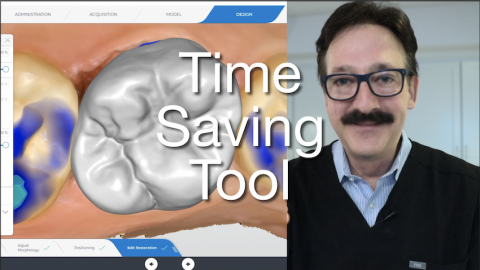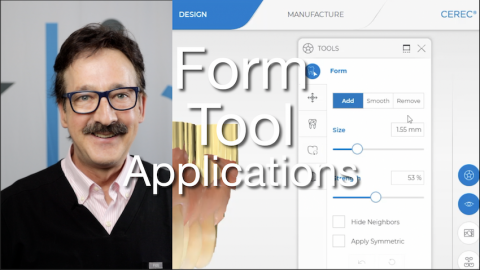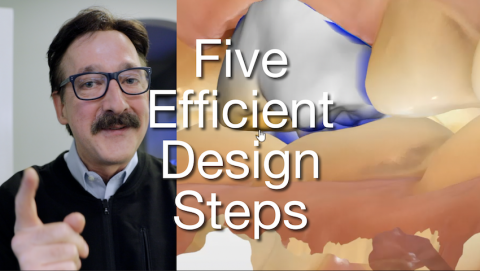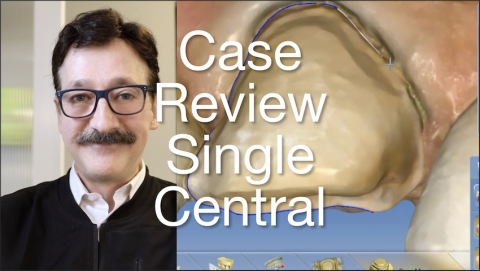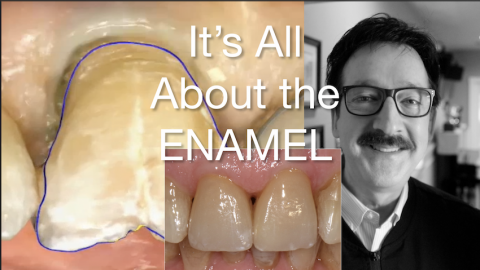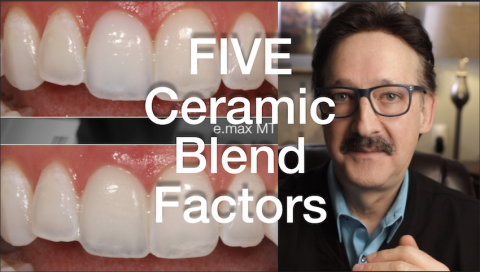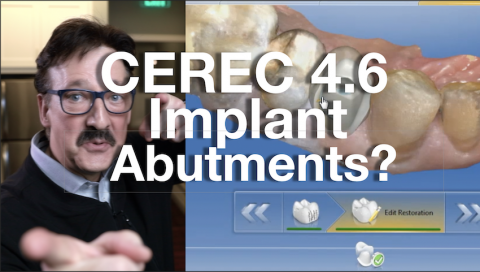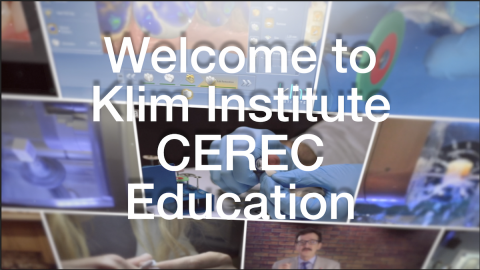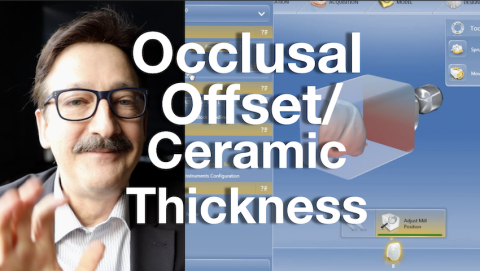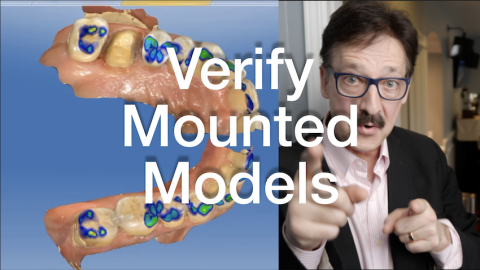Submitted by James Klim DDS, CADStar Host on 07/04/2019 - 8:45pm
Submitted by James Klim DDS, CADStar Host on 07/01/2019 - 10:35pm
There are two tools I use 90% of the time in my design theater, Form and Shape Two Directional. This video will present the primary design actions I use with the form tool and how best to optimize the paint brush size and strength options. This video is presented with the Primescan interphase. However, the tools and applications are applicable for those still using the Omnicam and CEREC 4.61.
Submitted by James Klim DDS, CADStar Host on 06/23/2019 - 10:23pm
This video is a design screen overview for bread and butter posterior dental applications. When applying consistent sequential disciplined design steps, one will discover that the design time will significantly speed up. The design principles and steps in this video apply to 4.6 users as well...just a different graphic interphase between 5.0 and 4.6 CEREC software versions.
Submitted by James Klim DDS, CADStar Host on 05/12/2019 - 10:19pm
Restoring a single maxillary incisor presents the greatest blend challenge with dentistry in the smile zone. When the adjacent teeth are in good shape, I stay conservative. With chairside CAD/CAM using the Dentsply Sirona system, the Copy and Mirror is my preferred design approach creating a "DNA form and shape" by copying the adjacent central. The next step is choosing the ceramic that blends best for the case. Since the ceramic and cement refractory behavior will change once cemented, so will the value and blend. In my blend theater, I prefer placing a transitional restoration that is machined with the projected ceramic and luting
Submitted by James Klim DDS, CADStar Host on 03/19/2019 - 9:36pm
Number one objective for anterior tooth upgrade treatment is addressing biofunctional demands. Biofunctional demands are often the challenge that is hard to navigate when there is advanced aging wear and tear conditions. This #cereccasereview will walk through the setup, CEREC design approach, and finished case addressing the maxillary central incisors when there is a challenging lingual wear issue.
Submitted by James Klim DDS, CADStar Host on 02/01/2019 - 8:53am
This video will review the concept behind the Ivoclar Navigational App which is a free smart device App download. I have found this App very helpful in selecting a workable brilliance/shade. Even though this app is applicable for e.max and the ZirCAD zirconia, I will share several other videos on how to extrapolate for other ceramics such as VITA and Empress. The five ceramic blend factors this video will address are target shade, ceramic thickness, ceramic translucency, preparation shade impact on ceramic selection, and the final blending factor of using cement colors.
Submitted by James Klim DDS, CADStar Host on 01/16/2019 - 7:03am
One of the features in CEREC I appreciate the most is designing and creating customized abutment/crown one or two piece restorations. CEREC 4.52 has been a smooth acquisition, design, and production process for implant restorations. Have been very pleased! One hassle for implant/abutment in CEREC 4.6 has been minimal thickness defaults and not being able to modify the metric settings for unique implant design and milled cases. As a result, some cases cannot be milled. This hassle in 4.6 has been frustrating for me. However, I did keep 4.52 on my system which has been seamless for implant design and production. So my go-to CEREC
Submitted by James Klim DDS, CADStar Host on 01/15/2019 - 9:37am
Welcome to the Klim Institute CADStar.tv online education and training. We are privileged to serve you with our online educational campus. We are viewed in over 150 countries. This number demonstrates how committed we are to providing quality, timely, and meaningful online content. We invite you to ask questions and respond with your comments either on our Ask Dr. Klim Forum, Message feature for member communication, and encouraging comments below every video. We upload new content videos each week that stay current with digital technology and related products and respond to asked questions. We are also growing our online CE. The
Submitted by James Klim DDS, CADStar Host on 12/09/2018 - 9:34pm
Occlusal Offset will impact material thickness milled and occlusal calibration. This video will discuss how to arrive at an Occlusal Offset that is properly calibrated for your CEREC system and assure proper occlusal material thickness and occlusal contact firmness.
Video Preview
Membership Video Viewing
Submitted by James Klim DDS, CADStar Host on 11/19/2018 - 9:07pm
Verify the model mounting before moving to the Design Phase. I have learned this valuable lesson. When the mounted models can be verified, the design process, parameter settings, and the final mill can be trusted. Occlusal verification is one of the critical check factors to avoiding occlusal adjustments of the final restoration(s).

